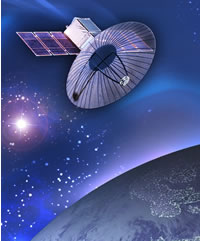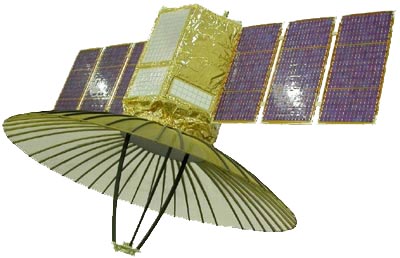Northrop Grumman Corporation (NYSE:NOC) and Israeli Aerospace Industries (IAI) have teamed to build and launch surveillance satellites carrying an Israeli Synthetic Aperture Radar payload. The US government is seeking operationally responsive capabilities to address the challenge posed by the proliferation of anti-satelite capabilities, particularly in China.
“An all-weather, day/night system like this adds an operationally responsive capability to the U.S. inventory that is critically needed… [such an] airborne assets will enable us to hold the high ground on a global scale when dealing with the threats we face today.” said Jeff Grant, vice president of Business Development for Northrop Grumman’s Space Technology sector.
TECSAR satellite carries a multi-mode X-band radar imaging payload which can provide significant, near-term, day/night and all-weather point and area collection capability to meet the immediate needs of warfighters in theater as well as those of the broader intelligence community. The a space-based radar imaging system will provide an all-weather, day/night imaging capability, offering US military and government users a rapid response, low-risk and affordable access to space.
“This new system provides a capability that complements both existing and U.S. military and intelligence community capabilities being developed,” said Alexis Livanos, corporate vice president and president of Northrop Grumman’s Space Technology sector. “When they want to move quickly on any given contingency, users now have an option that offers greatly reduced timelines for deploying tactical satellites at low cost and at very low risk.”
As other Israeli built satellites, TECSAR is a low weight mini-satellite weighing about 660 pounds (300 kg). In the US configuration it could weight up to 800 pounds (363 kg). The projected cost is expected to be around $200 million per satellite, including launch costs. IAI’s TECSAR is a high-resolution, synthetic aperture radar imaging satellite developed under an Israel MOD Defense Research & Development Directorate (DRDD) funding. The satellite uses a generic bus system developed by IAI Space Systems Division, to fit both EO imaging and SAR payload. The 220 pounds (100 kg) EL/M-2070 SAR payload employs multi-beam electronic steering was developed by IAI/Elta Systems. While the specific resolution of the payload is classified, it’s advertised capabilities include multiple modes of operation, including high resolution spot, strip, mosaic (Electronic Steering) and wide area coverage. Image enhancement for better target discriminantion is also supported, by employing Multi-polarization.
Northrop Grumman is planning to have the satellite ready for operational use within 28 months after authorization to proceed. The satellite will be stored for quick preparation for launch, on a 30-day call-up. TECSAR satellites ordered by the US Government could be individually launched from a low-cost Minotaur or Falcon 1 rocket, or as a group of four or more on an EELV-class launcher.
The first TECSAR satellite was launched on an Indian satellite launcher in January 2008. Northrop Grumman plans to demonstrate the new rapid response capability following the launch. The company proposes to modify the Israeli multi-mode X-band SAR carrying platform to incorporate additional equipment required by the US government, including mission assurance systems and secure communications. The new satellite program is dubbed ‘Trinidad’. Northrop Grumman will also conduct final integration and testing for Trinidad satellites, at its facilities in Redondo Beach, Calif.
“We are confident that the high resolution imagery provided by Trinidad can become an important part of the U.S. inventory, providing global awareness,” said Jeff D. Grant, vice president and general manager of the company’s National Systems Division. “Northrop Grumman is ready to quickly deliver Trinidad to help the U.S. gain a more complete picture of the threats we face today on a global scale.”
The space based radar will provide 24-hour surveillance in all weather conditions from a low earth orbit. The satellite can be controlled by multiple ground stations to address user requirements in different locations. It will be operated with a compact, portable ground system that provides the flexibility to perform tasking and data dissemination from the continental U.S. or from any operational theater. The payload control system is designed to facilitate tasking to dissemination cycles in less than 3 hours. The ground station supports various automated processes including Registration to Digital Map or Orthophoto, Automatic Target Detection, Automatic Cluster Detection, Automatic Change Detection, Report Generation and Dissemination.

















